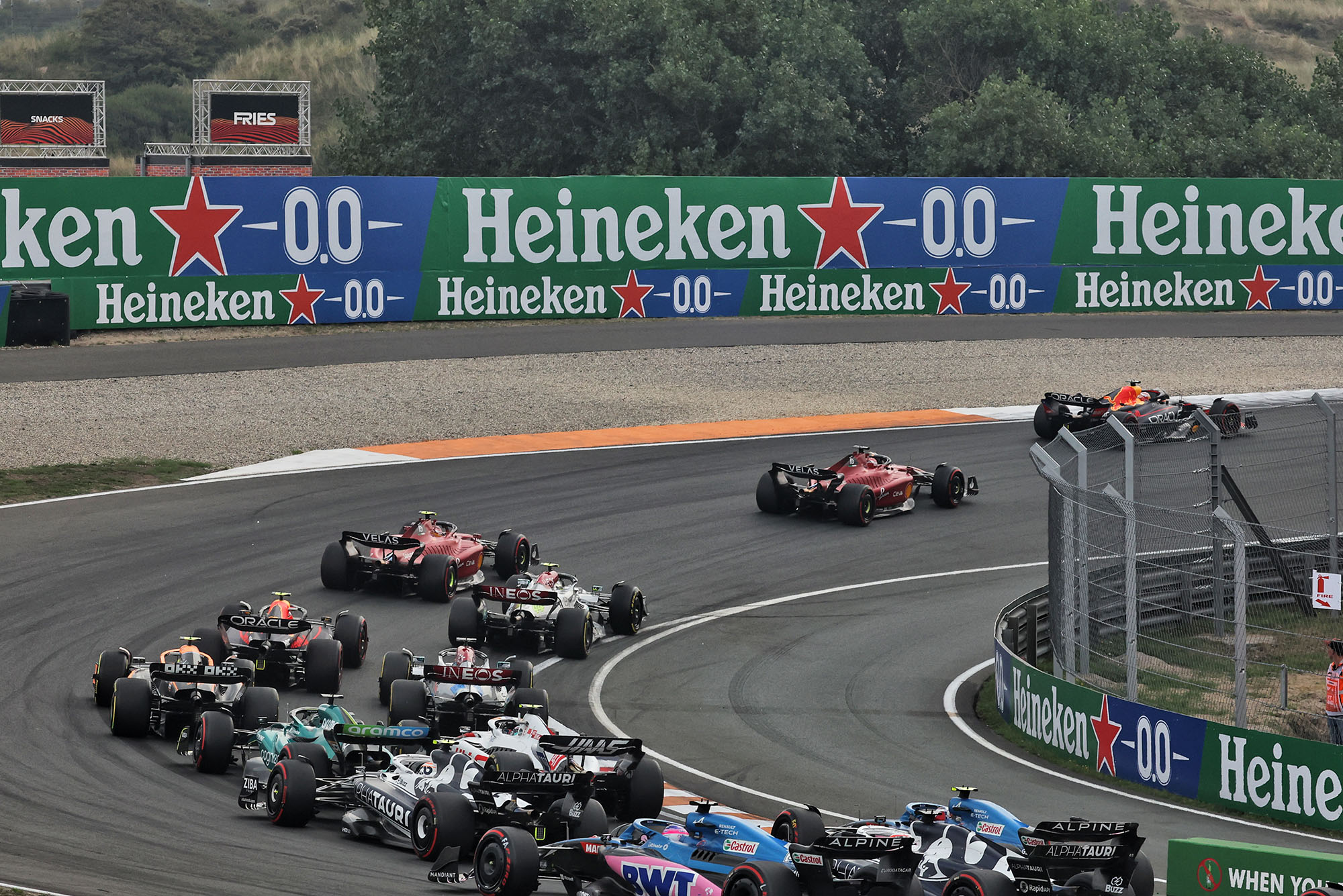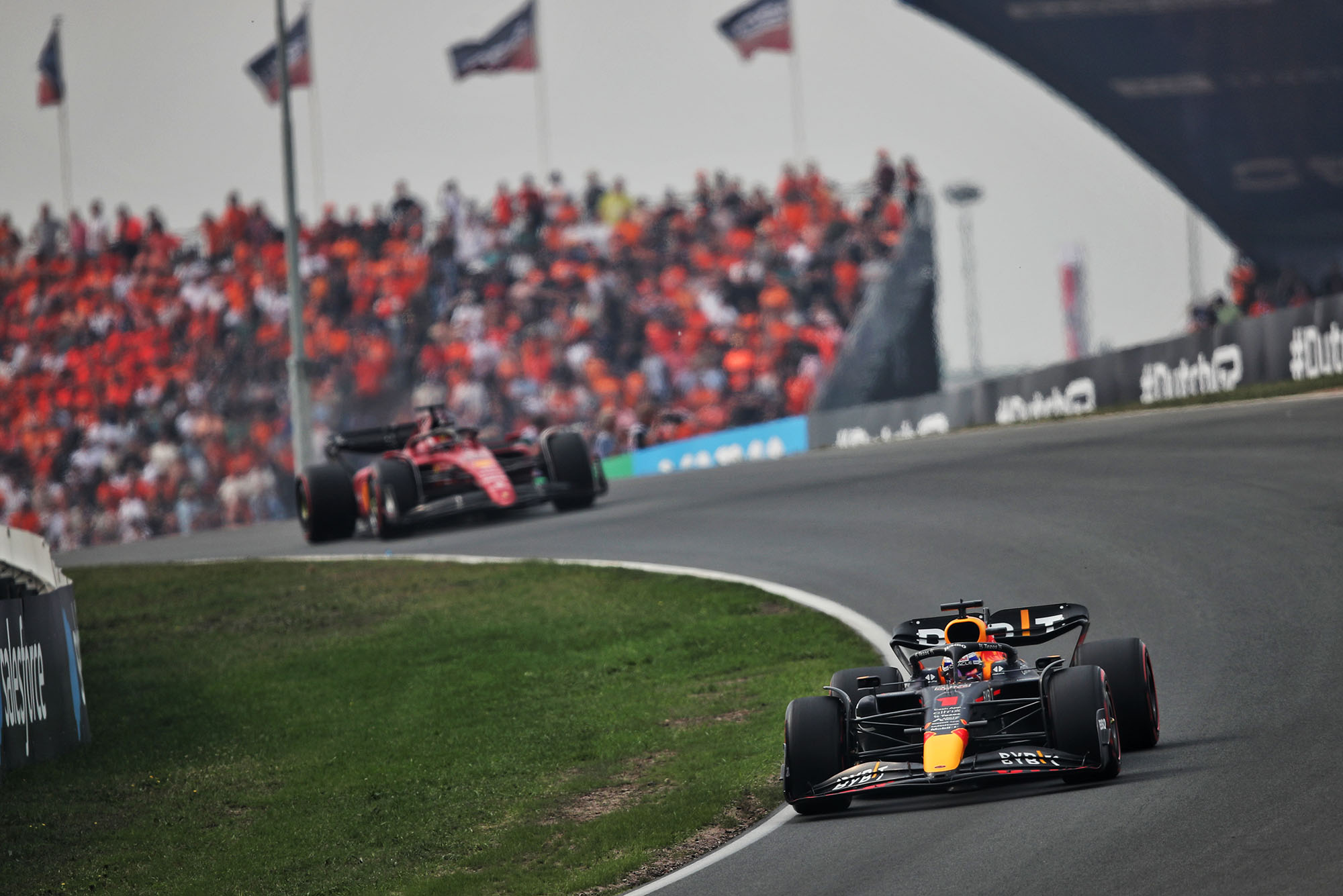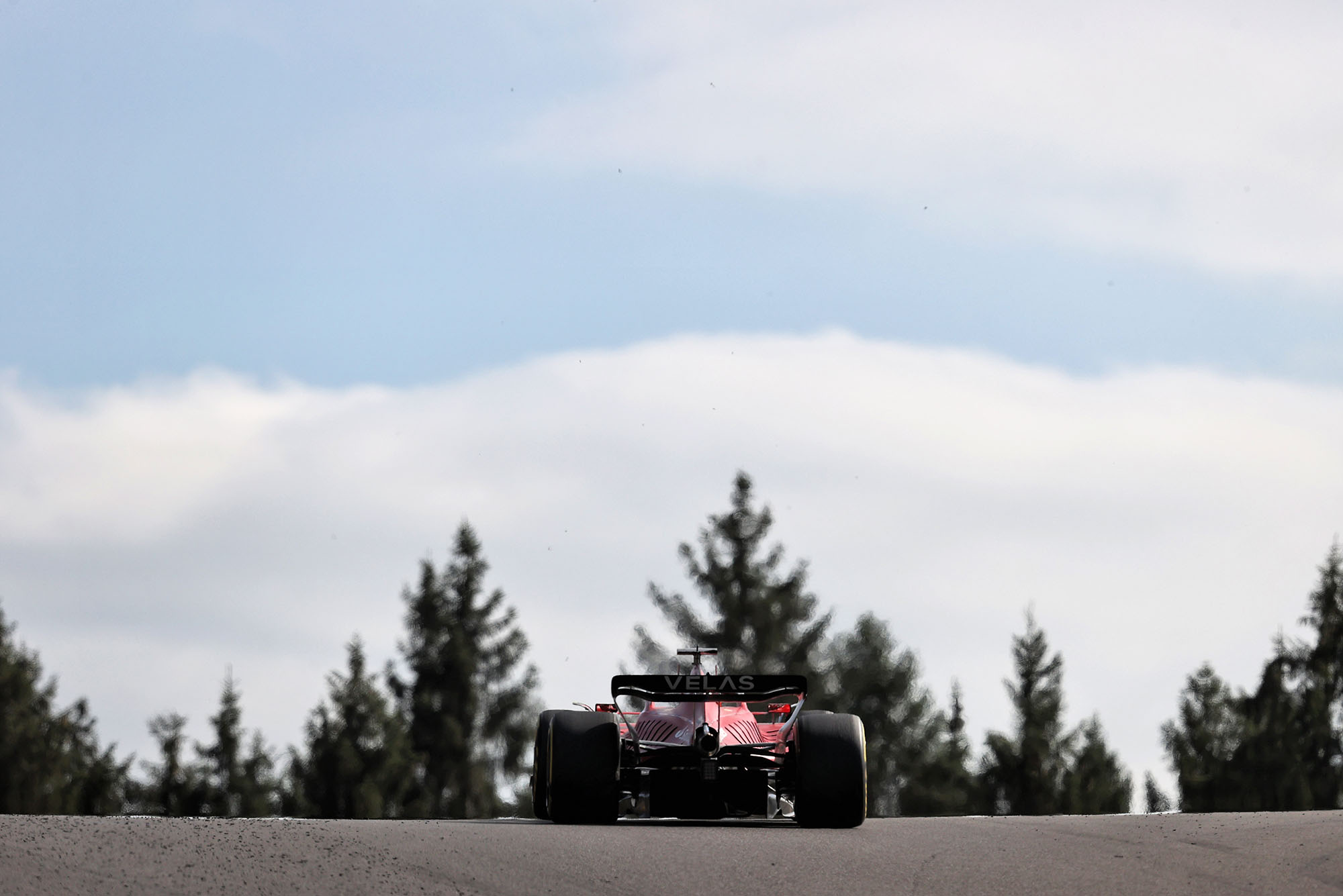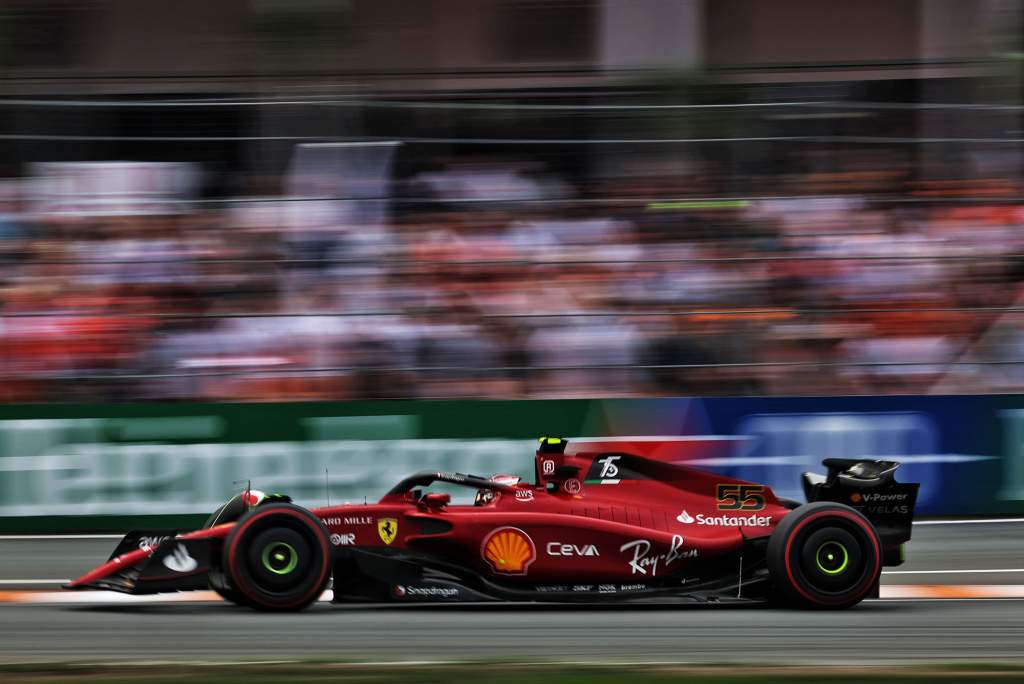Up Next

Carlos Sainz has offered three plausible theories for why Ferrari’s form has slumped during recent Formula 1 races, saying the team needs to do some tests on its F1 car because there are “doubts we want to take out from our heads”.
Sainz was referring specifically to various difficulties Ferrari faced at Spa and Zandvoort, both tracks where it was well beaten by Red Bull and runaway F1 championship leader Max Verstappen specifically.
Sainz turned pole position at Spa into a third-placed finish, nearly 27 seconds behind Verstappen – who won from 14th on the grid.
At Zandvoort Charles Leclerc was narrowly beaten to pole by Verstappen (by just 0.021s) but would likely have finished the race behind both Mercedes without safety car interventions that helped him take third.
“In general we haven’t been as strong in the race as we would have liked,” Sainz said ahead of the Italian Grand Prix at Monza.
“If that’s coming from tyres overheating, if that’s come from others getting better recently through the year with the upgrades, or this is coming from us simply not optimising the set-up of the car for that race in particular, is something we are obviously going to investigate.

“Personally, I picked up a bit of damage from the contact with Lewis [Hamilton at Turn 1 at Zandvoort], this probably affected my race pace in the whole race, that’s probably why I wasn’t as competitive as my race pace on Friday and wasn’t as comfortable with the car in the race.
“But I think the issue is a lot bigger than that – we were just not as competitive as we would have liked.
“There’s going to be some tests to do, some things, some doubts that we want to take out from our heads. See if we can pick the race pace back up.”
Analysing Sainz’s three theories for Ferrari’s recent slump in pace leads to a line of thought which poses a further intriguing overarching question.
The fall-off in race pace has been evident since Hungary, the last race before the summer break.
Up until that time the Ferrari F1-75 had set seven pole positions from 12 dry qualifying sessions, as well as a wet pole for Sainz at Silverstone. Although only four victories were scored in that time, the mismatch wasn’t usually down to any lack of race pace.
WHY ARE TYRE TEMPERATURES SUDDENLY A PROBLEM?

Since Hungary, Ferrari has struggled to combine getting its tyres up to temperature well in qualifying and preventing them from overheating in the race.
The early stages of last weeks’s Dutch Grand Prix showed the problem quite plainly as Leclerc would close down Verstappen’s lead but then be forced to back off once again as his rear tyres began to overheat. For Sainz, with car damage from his contact with Hamilton’s Mercedes at the first corner, the problem was even more acute.
For three consecutive races – Hungary, Belgium and the Netherlands – Ferrari has struggled to manage its tyre temperatures, having not experienced this issue at any of the previous races. There were tracks which highlighted the car’s tendency to overwork its outer-front tyre and induce graining. But there was no particular issue with temperatures and now suddenly there is.
In this regard, Sainz is right – there is something recent here Ferrari needs to get a handle on.
FERRARI’S RIVALS HAVE UPPED THEIR GAME

Red Bull has continued to shed weight from its RB18, the car’s balance has been continually refined with steady tweaks to its floor edges and it has definitely become faster – in Verstappen’s hands, at least.
Mercedes has understood its troublesome W13 much better in recent races too, and is now beginning to tease Ferrari-matching speed from it.
So yes, some of what Ferrari is experiencing is down to what Sainz calls “others getting better” – but Ferrari still needs to ask why it hasn’t been able to improve its own car at a similar or better rate.
FERRARI DENIES IT, BUT HAS THE FLEXI-FLOOR DIRECTIVE PLAYED A ROLE?

It’s impossible to know from the outside what set-up choices have been made, and it’s clear the layout of Spa was unsuited to the Ferrari’s strengths (cornering) and played to its inherent weakness (drag at high speed).
But there is nothing about the layout of the Hungaroring or Zandvoort which should have led to any more set-up difficulties than the tracks on which the car blitzed the field earlier in the season.
The new technical directives concerning vertical accelerations and plank mounting came into force at Spa, one race after Ferrari lost pace.
Mattia Binotto emphatically denied any influence from this on Ferrari’s lack of pace at Spa – but could it be possible that Ferrari ran to the new interpretation one race early, so as to prepare? And if so, is that the real reason for the car’s recent pace drop-off?




